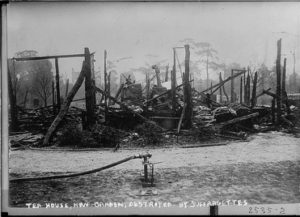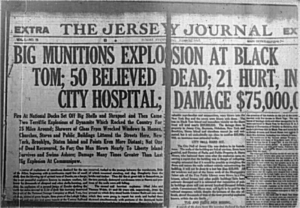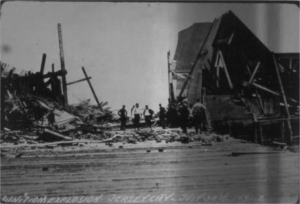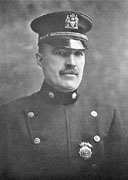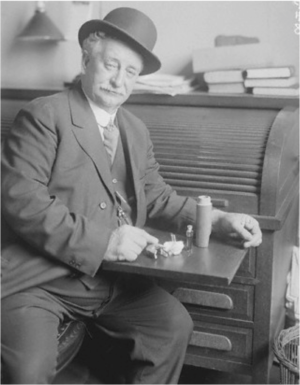Bimbashi Garland – The man who taught the Arabs about IEDs – a British Ordnance Corps officer and metallurgist. Thanks to Leslie Payne for flagging this gentleman polymath to me.
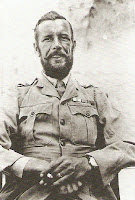
Previous posts have detailed some of the remarkable polymaths who have played in the explosive field, like the Earl of Suffolk GC. Major Herbert Garland OBE, MC FCS is another of these and it’s a remarkable story with real currency. Herbert Garland was born in Sheffield in 1880. In the years before World War One he was employed firstly as a soldier – an “Ammunition Examiner” of the Ordnance Corps trained at Woolwich, posted to the Channel Islands and then to Khartoum, then as a government explosives expert as a superintendent at an Army munitions laboratory in Cairo. During this time his hobby was archeological metallurgy, and Cairo was certainly the place to follow that interest.
When the war started he joined the “Arab Bureau” along with TE Lawrence and a rag tag bunch of businessmen, spies, soldiers and intellectuals. The Arab Bureau’s role was a model of modern day irregular warfare and I’ll write about them more in the future. Basically they had a very broad remit to develop intelligence and undertake operations across the Arab world in support of Britain’s war aims. It was a model of fusion between military and political activity that is rarely seen. Lawrence of Arabia’s activities where just a part of their activity. As an organization it wasn’t without its critics who saw them as a group of amateurish and incompetent pro-Arab dilettantes. It’s intruiging to me that quite a few of the Arab Bureau, including Lawrence, Garland and (the not famous enough) Gertrude Bell shared a common interest in archaeology.
Garland, given a Special List commission, became the Bureau’s explosive expert, despite a somewhat casual approach to explosive safety. He developed grenades and an improvised mortar systems to launch the grenades, which was used extensively at Gallipoli. An image of Garland’s mortar is here
Garland also designed a range of IEDs used by Lawrence and Garland himself in the Arab revolt against Ottoman rule. In fact it would appear Garland was doing this work well before Lawrence joined the Bureau. Garland planted the IED that derailed the first Ottoman train near Toweira station in 1917, using an improvised pressure switch mechanism. Interestingly he built and emplaced his IEDs so that they would not be spotted by Turkish troops employed to check the line before a train ran.
Garland was an Arabic speaker and earned high praise as a teacher of his dark arts. I rather like this quote from Lawrence of Arabia about thim; Lawrence had travelled to Yenbo, the base of the Arab army under Feisal “where Garland single-handed was teaching the Sherifians how to blow up railways with dynamite and how to keep army stores in systematic order. The first activity was the better.”
In 1918 he was sent to Medina to accept the Turkish surrender. Lawrence assessed Garland’s contribution to the revolt as “much greater” than his own. Garland died in 1921, his health destroyed by the campaigns he fought in the Middle East – and it took his wife two years to claim a war pension, as at first the military pensions department refused to accept his illness was directly connected with the rigours of his wartime experience, riding with the Bedu across the deserts of Arabia.
I’m reminded of my favourite quote from The Seven Pillars of Wisdom, by T E Lawrence, and very possibly my favourite quote ever:
All men dream: but not equally. Those who dream by night in the dusty recesses of their minds wake in the day to find that it was vanity: but the dreamers of the day are dangerous men, for they may act their dream with open eyes, to make it possible.
Garland like his colleague Lawrence, was a dreamer of the day. Sua Tela Tonanti.

